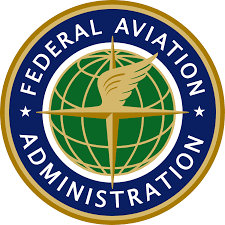In the rotorcraft flight service world, safety reaches beyond being a simple priority — it’s the backbone of every mission we accept, every flight we plan, and every customer we serve. With that truth in mind, it’s essential to understand why the recent and upcoming changes to Federal Aviation Administration (FAA) regulations — specifically the SMS rule under Part 5 — matter to YOU. This blog post explains what Part 5 is, why it’s so important, and how it enables a company like Dakota Rotors to reach higher.
What is 14 CFR Part 5?
In short: it’s the FAA’s regulation requiring many aviation certificate-holders to implement a formal Safety Management System (SMS). Here are the key points:
-
Part 5 defines minimum SMS requirements — i.e., each organization must develop and implement an SMS appropriate to its size, scope, and complexity.The SMS must include four core components (sometimes called “pillars”):
-
Safety Policy
-
Safety Risk Management (SRM)
-
Safety Assurance (SA)
-
Safety Promotion
-
-
Part 5 is no longer just for the big airlines (Part 121) — recent rulemaking has expanded applicability to charter/commuter operations (Part 135), air tours (Part 91.147), certain manufacturing/design organizations (Part 21) and more.
-
The rule is performance-based: it prescribes what must be achieved, but leaves flexibility in how an operator implements the system.
"By embedding safety into everything we do — from leadership decisions through to flight-line operations — we aren’t just complying with the FAA. We’re building a company that operates smarter, safer, and more sustainably.."
Why It’s so Important for Dakota Rotors and you.
Here are the main reasons why Part 5 is not just a regulatory checkbox — it’s a strategic business necessity:
1. Proactive vs. Reactive Safety
Too often, accidents or incidents reveal problems after the fact. Part 5 forces us to shift to proactive hazard identification and risk management. We’re not just reacting to events, we’re setting up systems to spot hazards, assess risks, implement controls, monitor results, and improve over time.
For Dakotas Rotors that means: every flight, every load, every rotorcraft configuration we use — we’re thinking ahead about what could go wrong, and how to mitigate it.
2. Strengthened Safety Culture
Safety is a technical field — but it’s also a cultural one. Part 5 emphasises that leadership (from the “accountable executive”) must engage, resources must be assigned, reporting systems must exist (and encourage reporting without fear of reprisal).
As a rotor-craft service company our front-line crews need to know: safety isn’t just a form to fill, it’s part of how we do our work. That builds trust, lowers human-error risk, and enhances our reputation in the field.
3. Business Continuity & Operational Resilience
Implementing an SMS means building structure into operations: formal processes, hazard logs, audits, training, data dashboards. These may look like extra work — but the upside is fewer surprises, fewer losses, fewer unplanned disruptions.
From the business end, that means fewer mishaps, lower insurance exposure, better contract eligibility, stronger customer confidence. The FAA notes that SMS “reduces costly accidents” and “improves data-informed decision making to prioritize resource allocation.”
4. Regulatory Compliance & Staying Ahead of Risk
Since implementation is mandatory for many operators (and becoming more so), failure to comply can lead to enforcement risk, certificate risk, and reputational damage.
More than that: as rotorcraft, external load, charter, air-tour operations become subject to these rules (or voluntary adoption becomes standard), being ahead of the curve gives Dakota Rotors a competitive edge. It shows we’re aligned with best practices, not playing catch-up. The FAQ from the FAA makes clear that waiting increases risk.
5. Aligning with International Standards
Because the global aviation industry uses frameworks such as International Civil Aviation Organization (ICAO) Annex 19 for Safety Management, having a compliant SMS per Part 5 means we align with international norms. That is especially relevant if Dakota Rotors participates in cross-border operations, or works with foreign contractors/customers.
What This Means for Dakota Rotors – Practical Steps
Given all the above, here’s a roadmap of what we should focus on internally:
-
Leadership Commitment & Policy
-
Ensure our senior management signs and communicates a formal safety policy (this is the “Safety Policy” pillar).
-
Assign an “accountable executive” for the SMS: someone who has final authority over operations and SMS implementation. Communicate clear measurable safety objectives (e.g., hazard-reporting goals, incident reduction targets).
-
-
Hazard Identification & Risk Management
-
Develop processes to identify hazards in our rotorcraft operations: external-load missions, remote high-altitude flights, shifting terrain, weather, crew performance, maintenance anomalies.
-
For each hazard, assess likelihood and severity, then implement controls — this is the core of the SRM process under Part 5.
-
Ensure we maintain records of risk assessments and mitigations.
-
-
Safety Assurance (SA) & Continuous Improvement
-
Establish audits, inspections, trend monitoring: Are the controls working? Are hazards increasing? Is the SMS itself effective?
-
Use data (from incident reports, near-misses, internal inspections) to feed into management review.
-
Ensure we document results and follow up on corrective actions.
-
-
Safety Promotion (Culture, Training & Communication)
-
Provide training for staff at all levels so they understand their roles in the SMS.
-
Foster a reporting culture: Encourage timely hazard/issue reporting, ensure protection from reprisal. The rule now explicitly emphasises non-reprisal reporting.
-
Share safety performance metrics with the team, celebrate successes, communicate lessons learned.
-
-
Documentation, Implementation Plan & Compliance Timeline
-
Prepare (or update) our SMS Implementation Plan: timeline, milestones, responsibilities, resources.
-
Conduct gap-analysis: Where are we short in our current processes relative to Part 5?
-
Submit required declarations or regulatory documents as required by the deadlines for our certificate type.
-
Maintain records: organisational system description (§5.17), hazard logs, risk assessments, training logs, corrective action logs, etc.
-
Why This Isn’t Just “More Paperwork”
Here’s the part where it becomes clear: this is not about filling forms to satisfy an auditor. It’s about creating a resilient operation. For Dakota Rotors, that means:
-
We mitigate operational disruptions (e.g., avoid cabin-load delays, avoid maintenance burdens caused by untracked hazards).
-
We protect crew safety, preserve equipment, reduce exposure to costly incidents — in turn preserving the brand.
-
We differentiate ourselves when bidding for contracts (external-load work, high-altitude work, specialized rotorcraft missions) by showing a mature safety system.
-
We position ourselves for future growth: as regulations broaden (Part 5 applies to more mission types, manufacturers, UAS), being ahead gives us flexibility and readiness.
Final Thoughts from Dakota Rotors
Implementing and maintaining an SMS under Part 5 isn’t optional for many operators — and even when it is voluntary, adopting it is smart business. For Dakota Rotors, as a rotorcraft service provider operating in challenging environments, it’s particularly vital.
By embedding safety into everything we do — from leadership decisions through to flight-line operations — we aren’t just complying with the FAA. We’re building a company that operates smarter, safer, and more sustainably.
If you have questions about how Part 5 affects our specific operations or want to dive into how we implement out our SMS plan, I’d be glad to dig in with you.
Let’s keep our rotors spinning — safely.



